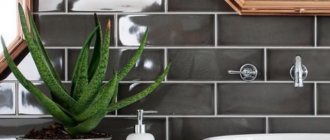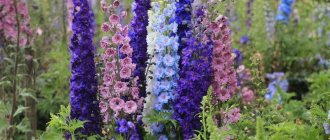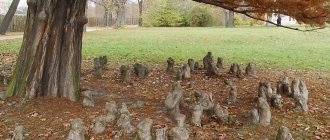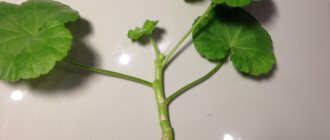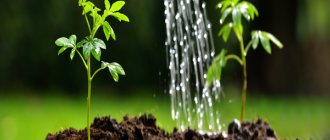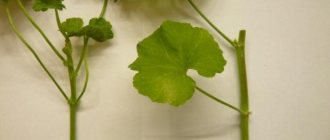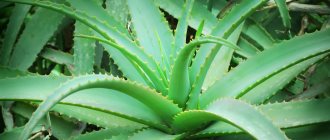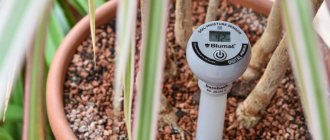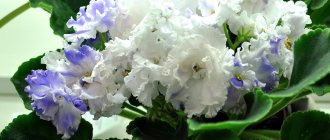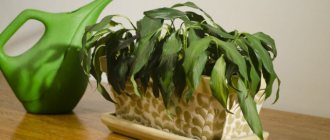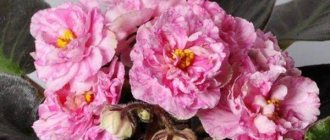Responsible step
Fertilizing in the spring is an extremely important agrotechnical procedure that provides a reliable foundation for the development of a luxurious flowering garden and vegetable garden, and guarantees the receipt of ripe, healthy fruits.
A deficiency of nutrient minerals in the soil causes many problems: plants weaken, often get sick and are unable to cope with difficult weather conditions. But it is also important to remember that an excess of minerals hides an even greater danger, both for botanical crops and for humans and the environment as a whole.
It is important to strictly follow the dosage of drugs and fertilizer application schedules, and in this matter, ready-made mineral complexes always win. It is impossible to calculate the exact amount of substances introduced with livestock products, because each farmer farms differently, and as a result, the component composition of the manure will be different. Ready-made fertilizers, which are offered by domestic and foreign industry, have a clearly regulated set of components in strict proportions, which will allow you to avoid mistakes with the dosage. So don’t be upset about the lack of organic matter, but let’s take a closer look at how you can fertilize the soil besides manure.
Can I feed plants with yeast?
Many housewives do not know that fertilizing with yeast is carried out not only for crops that bloom in the garden, but also for indoor flowering. Yeast is actively involved in growth and maintaining an attractive appearance. In addition, it is a natural substance that will not harm plants. But it is important not to overdo it with this product and not to use a large dosage. The product has a beneficial effect on soil microflora and effectively protects indoor plants from diseases. The recipe is quite simple:
- 20 grams of yeast with warm water (one liter).
- Mix well until completely dissolved.
- Water the flowers when the water has cooled slightly and is at room temperature.
If the housewife wants her indoor plants to bloom and feel comfortable, she needs to create a feeding schedule. Compliance with it will help the plant get enough of the necessary substances. Thus, the flowers and plants in the house will always be beautiful and bloom all year round.
Options to choose from
Top dressings popular in gardening can be divided into three large groups:
- Natural organic preparations of natural origin - in addition to manure, these also include: compost, peat, wood ash, green manure and even banal green manure.
- Mineral complexes are one-, two- and multi-component compositions containing various macro- and microelements: phosphorus, potassium, nitrogen, as well as molybdenum, zinc, copper, iron, calcium, etc.
- Combined products that include both organic and mineral preparations, as well as a number of vitamin complexes, humates and humins, and other useful components.
Organic Substitutions
A clear advantage of using these substances is the ability to grow an absolutely healthy and environmentally friendly crop. When it comes to the question of how to fertilize the soil in the spring if there is no manure, the best substitutes are the following.
Compost is the most inexpensive and easiest way to replace mullein, but it is quite labor-intensive and time-consuming. The basis of the compost pit is layers of organic plant residues (tops, garden herbs, foliage, sawdust, peat bog), processed under the influence of beneficial microorganisms for 9-12 months. Periodic mixing of the contents of the pit (3-5 times per season), as well as the use of special catalysts such as “Compostin”, etc., will help speed up the maturation of compost. Ready-made compost is used during spring plowing, at the rate of 0.5-1 bucket per square plot.
Vermicompost is a product of the processing of organic residues by Californian earthworms. The process goes twice as fast as in a compost pit, while only 1 kg of the finished substance easily replaces up to 10 kg of manure.
Peat - this substrate itself contains practically no useful components, but adding it to the soil mixture in the garden and garden changes the structure of the earth, increases the breathability of the soil and improves the ability to absorb moisture. Peat will be an ideal component for crops that prefer slightly acidic soils: many fruit and berry plants, tomatoes, etc. Peat is also an integral part of the compost heap.
Sapropel (river silt) - is formed as a result of the decomposition of algae and inhabitants of fresh water bodies. The substance, rich in organic matter, is well suited for cultivating the garden in the spring, especially on sandy soils and sandy loams, since it has moisture-retaining properties and does not change the environment.
Eggshells are rich in calcium, which is important for the proper development of all plants. It is thoroughly washed, dried and crushed into fine grains, scattered around the tree trunks of fruit trees or poured into shallow trenches along future plantings.
Green fertilizer is an aqueous infusion of herbs (nettle, clover, calendula, potato tops, etc.), which is kept warm for 8-10 days, and then, diluted to a concentration of 1 to 5, used as root dressing and leaf fertilizer.
Wood ash is a good alkalizing component, rich in potassium. It has a dual function, being both a fertilizer and an insecticide. Spray the area in dry form (150-200 g per hundred square meters) or introduce it in dissolved form (the same concentration per bucket of water). Cruciferous crops (all types of cabbage) and berry crops respond well to fertilizing with ash.
Green manure is a natural source of nitrogen. Useful herbs (lupine, peas, clover, alfalfa, etc.) are sown along the row spacing, and before flowering they are mowed and spread as mulch.
Mineral fertilizers for the garden in spring
It is easier to use ready-made drugs, because to calculate the correct dosage, you just need to follow the instructions on the package exactly. Before spring digging, you can apply any chemicals even in dry form, simply scattering granules (powder) over the field, followed by embedding the substances deeper.
The main active component for plants in the spring is nitrogen, as well as the potassium-phosphorus complex, therefore, in the question of how to fertilize the soil, in addition to manure, it is appropriate to add multicomponent fertilizers like “Nitroammofoska” or “Nitrophoska”, as well as one- and two-component mixtures: “Potassium Monophosphate” , “Diammofoska”, “Superphosphate” simple or double, “Precitate”, “Kalimagnesia”, potassium nitrate, as well as “Urea” (urea), ammonium nitrate, etc.
Special mixtures for specific crops are extremely popular: “Berry”, “For Tomatoes”, “Cabbage”, etc.
It is better not to use chlorine-containing preparations (potassium chloride, etc.) in the spring, since this element is not beneficial and contributes to a change in the flavor and aromatic complex of berries, melons, and potatoes.
Nitrogen will allow plants to actively gain green mass, because in case of deficiency of this element, any botanical crop stops growing, the foliage loses its green color, turns pale and shrivels.
Potassium will help crops strengthen their immunity, develop solid disease resistance, and survive droughts and frosts. In addition, the element improves the commercial properties of the crop, increases the sugar content of fruits and berries, and enhances the natural aroma.
Phosphorus plays a leading role in the formation of the root system, and is also important for the development of a powerful above-ground part of plants.
Mineral fertilizers are applied to the soil in advance, before digging or immediately at the time of planting seedlings or sowing seeds. The concentrations of the drugs differ, since spring plowing takes place 1-1.5 months before planting. As soon as the snow melts and the average daily air temperature is set at +5 °C, you can apply the following to each square of the site:
- 50-75 g phosphorus,
- 45-60 g potassium,
- 25-40 g of nitrogen.
To ensure 100% absorption of minerals, it is recommended to add substances in a special chelate form.
It is convenient to apply any other microelements in the form of foliar sprays on the leaf, for which the powder of boric acid (1-2 g per liter of water) or manganese (0.1-0.5 g) is dissolved and irrigated on each bush. Copper or iron sulfate is also used. At the same time, a dual approach is ensured: feeding and disease prevention.
When do house plants and flowers need feeding?
Many housewives think that feeding flowers with nutrients is necessary for plants only in the first month after transplantation. However, when the resources of a flower are depleted, the supply should be constantly replenished. When do house plants and flowers need feeding?
- Set a proper schedule, because excess nutrients can kill your pet.
- Many fertilizers are used for different flowers, but matching the needs of a particular plant crop, its development and the time of consumption are key factors in creating a comfortable environment.
- Individual selection of nutrients for a particular plant will allow you to establish a stable balance of development and maintenance of vital functions.
In development, flowers differ from each other, even if this is not noticeable in appearance. In winter, active replenishment of nutrients causes the flowers to awaken. If this procedure is not performed in cold weather, then growth activity will stop and the plant's resources will begin to be depleted, which will lead to detrimental consequences. That is why saturation with fertilizers should be carried out mainly during the active development of the flower. But we must not forget that during the rest period a small amount of nutrients is also used so that vital resources can be replenished.
The period of saturation with fertilizing is selected individually according to the requirements of a particular plant type. Replenishment with useful components most often begins in early spring, when new leaves are just appearing. The process of adding elements is completed during the period of cessation of growth activity. Experts advise carrying out the feeding procedure more often from March to September. The deadline is set individually for each color.
Combination drugs
In terms of how to fertilize the land other than manure, multicomponent organomineral fertilizers have proven themselves well.
“Agrovit Kor” is a humus-forming fertilizer containing organic matter (peat, brown coal, amino acids) and minerals (balanced set), which promotes accelerated growth and strengthens plant immunity, as well as improving soil structure. There are universal and specific series.
"Bona Forte" - fertilizers contain chelated forms of minerals, which are most easily absorbed by any botanical crops. The composition also contains vitamins and other vital substances.
"Fertika" - multi-component mixtures for the full development of plants of any species and varieties, which help increase productivity, ensure environmental safety and improve product quality.
It is always possible to replace manure, but it will hardly be possible to do without additional nutritional supplements. Each presented preparation differs in composition and ensures the effectiveness of plant development to a greater or lesser extent. It is important to strictly follow the breeding instructions and then you will be able to grow a truly luxurious garden and vegetable garden.
How to properly feed house plants and indoor flowers: rules
Feeding house plants and indoor flowers
In order to feed plants correctly, you need to comply with some requirements. Then the vegetation and flowers in the room will be able to receive the necessary nutrients to maintain growth, will acquire an attractive appearance and will continue to function normally. How to properly feed house plants and indoor flowers:
Rules to follow when feeding vegetation:
- Observe individual preferences for an individual pet.
- Read the manufacturer's instructions carefully.
- Do not change the schedule, which is selected specifically for color preferences.
- Select the conditions and time when fertilizer is applied. For example, if it is very hot - in the midday heat - then it is forbidden to give nutrients. It is better to fertilize in the morning and evening, during the day only when it is cloudy.
- Liquid fertilizers are not applied in undiluted form.
- Feeding is not carried out in dry soil; you must first water the plant.
- Use foliar feeding method. After watering, spray the leaves with plain water, and only then apply fertilizer. Thanks to this, the likelihood of a burn immediately decreases.
- Use fertilizers that your plants are already accustomed to. Do not change the composition and concentration. This is harmful to house flowers. Remember that a high concentration of one substance does not replace the absence of other components.
- Fertilizers are not added after transplantation (only during planting); it is better to wait half a month and then carry out the fertilizing procedure. If the flower is healthy and grows in good soil, then start adding useful components no earlier than two months after planting. A good substrate will contain all the necessary substances for growth and development for some time.
- Do not use beneficial substances if you suspect the development of root diseases, for example, the appearance of rot or a disturbance in the growth process. Vegetation that has become infected with pests should not be fed, otherwise it will only get worse and the flower will die.
Follow the rules and recommendations to achieve stable flower growth in the room and maintain its normal functioning. It is not recommended to deviate from the feeding schedule and conditions, otherwise the flowers will quickly begin to wither if they do not receive useful components in a timely manner.
